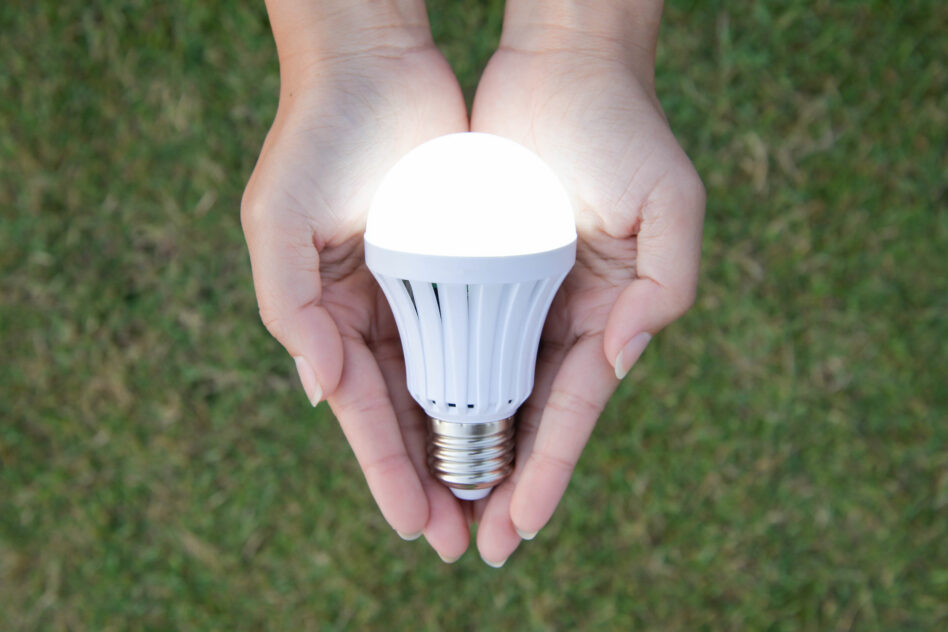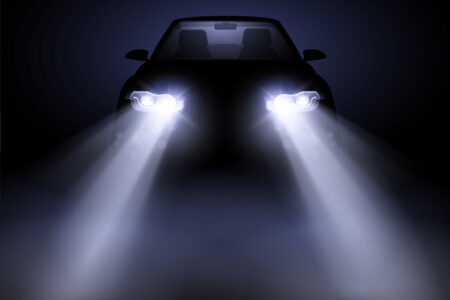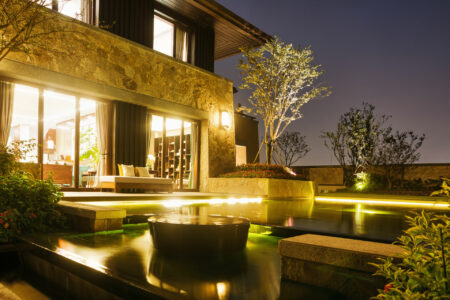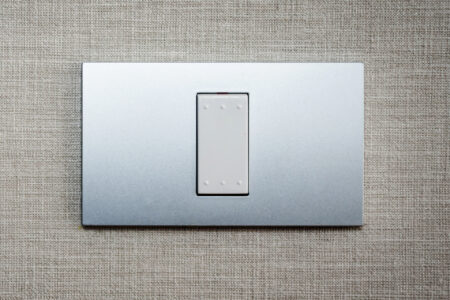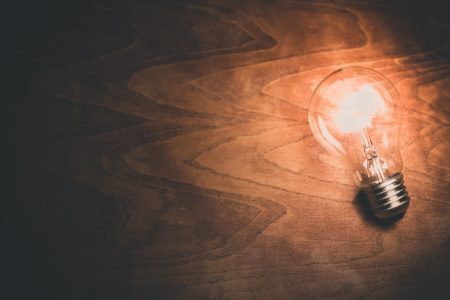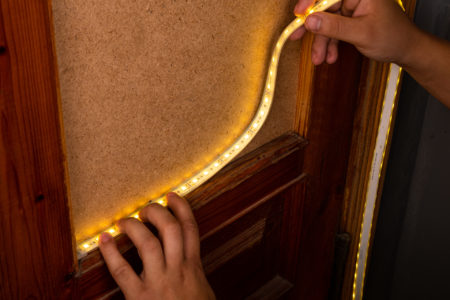Knowing the precise sizes of light bulb bases can be tricky. A common size is the medium light bulb base. But how exactly does it look like? Continue reading to find out more about medium base bulb sizes, bulb shapes, and how to choose the right one for you!
What Is a Medium Light Bulb Base?
A medium light bulb base is simply one that has the code E26 on it. To clarify, the “E” stands for Edison Screw, a standard light bulb base that can be screwed into light fixtures. The number “26” refers to the size of the bulb base, which is 26 mm.
The E26 light bulb size is considered the standard size in American homes. You see, it fits into most light fixtures, such as lamps, ceiling fans, spotlights, and so on. By the way, E27 bulbs are the equivalent of it in the UK.
As a side note, you might hear the E26 size described as a regular-sized screw or a Medium Edison Screw (MES).
What Are the Other Bulb Base Sizes Available?
There’s a variety of bulb base sizes available on the market other than the medium size. We’ll go over four of the most popular in the United States:
We believe you now know what the code E12 means. This 12-millimeter light bulb base is also known as a candelabra. It’s relatively small, as is the bulb attached to it.
This size is ideal for decorative applications or fixtures. It’s commonly used in nightlights, chandeliers, and string lights. The E12 bulb may even come in unique designs, such as the shape of a flame tip.
The size E17 of a bulb base is referred to as intermediate. Because of its compact size, it has similar applications to the size E12 we mentioned above.
You’re most likely to find the E17 bulb base size used in appliance lights such as those found in refrigerators and microwaves. It’s also widely used in desk lamps and Christmas decorations.
A light bulb with a G4 base size fits lighting fixtures differently than an Edison Screw light bulb. To explain, G4 bulbs are also known as bi-pin base light bulbs because of the two pins fixed at their base. To secure the bulb into the fixture, these pins are pushed into the fixture rather than screwed in.
In the case of G4 bulbs, the number “4” indicates that the distance between the two pins is 4 millimeters. This base size is tiny so its bulbs are frequently used in lighting steps, cabinets, cooker hoods, and other similar applications.
The GU24 light bulbs are installed in a somewhat similar way to the G4 bulbs. The GU24 bulbs have two short pins protruding from the base. When attaching the bulb to the light fixture, we insert the pins into their respective holes and then twist them to secure the bulb in place.
As you might’ve already guessed, the distance between the two pins in a GU24 bulb is 24 millimeters. These bulbs are available in compact fluorescent lamps (CFLs) as well as LEDs and have a variety of uses in a household.
How Do You Know Which Bulb Base Size to Buy?
If you want to buy or replace light bulbs but aren’t sure what base size to get, there are two easy ways to figure it out:
Method 1: Check the Old Bulb
If you already have a bulb secured into your light fixture, take it out. Then, look for a print, which is usually near the base of the bulb. This print should include details about the bulb, including the size of its base.
In case you can’t find any information printed, you can take the bulb to a nearby store, and they’ll be able to tell you what size it is.
If you have a bi-pin light bulb, you can know its base size by measuring the distance between the two pins using a measuring tape.
Method 2: Measure the Light Bulb Socket
This method is in case you don’t have any existing bulbs fitted in your light fixtures. First off, you’ll need to examine the structure of the light bulb socket, also known as the light fixture base. Simply put, it’s the part of the light fixture that attaches to the light bulb’s base.
If you found a threading pattern, this will indicate that you need an Edison Screw base bulb. Whereas, if you discovered two slim holes spaced apart, this means you’ll need a bi-pin base bulb.
If you don’t have a measuring tape, there’s a simple technique for measuring an Edison Screw fitting. You only need a quarter, a dime, and a penny.
Place each coin on top of the socket and see which one has roughly the same diameter. The coin that matched will determine which base size you should look for:
- Quarter: Medium/Standard
- Dime: Intermediate
- Penny: Candelabra
However, if your light bulb socket fits pins, then the coin technique won’t be useful. You’ll need to consult the user manual that came with the lighting fixture to find out what base sizes are compatible with it. Alternatively, you can seek the help of a professional.
What Are the Most Common Light Bulb Shapes?
Moving on to the different light bulb shapes, codes, and how to identify them. Of course, there are several types available, but we’ve chosen the most commonly used to get you familiarized with them.
Before we begin, it’s important to note something that applies to all light bulb shapes. As you can see below, each shape is denoted by one or more letters. That said, when you look at a bulb’s details, you’ll notice that this letter is followed by a number.
Now let’s assume you’re holding a light bulb with the code A21 written on it. The letter “A” stands for arbitrary, which is the shape of the bulb, and the number “21” is the diameter of the bulb at its widest point. This number is measured in eighths of an inch.
The most widely used shape is arbitrary which is signified by the letter “A.” This is the standard shape and will work with a wide range of light fixtures. It’s used in lighting lamps, ceilings, porches, closets, and anything else you can think of.
Bulbs with a candle or a flame tip shape are identified by the codes “C” or “CA.” Due to their artistic design, these bulbs are perfect for all decorative purposes, chandeliers, and high-end wall sconces.
The letter “T” denotes a tube or tubular shape. It’s primarily intended for the typical straight fluorescent light bulb.
The bulb sizes that are frequently used and we happen to see them in lots of places, like offices and grocery stores, are the T8 and T12. We also use them in our homes to illuminate kitchens and garages.
The light bulb types with the “G” code are pretty hard to miss. They have a globe-like shape and are intended to be visible, so it’s unlikely to find one hidden in a light fixture. They’re best known for decorating vanity mirrors.
The reflector light bulbs carry the code “R” on them. They get their name from the fact that they have a built-in reflecting surface that broadens the range of light that they emit. That’s why they’re frequently utilized in recessed lights in homes, restaurants, and hotels.
How Do You Choose the Right Light Bulb for You?
We know how confusing it can be to choose from an infinite number of light bulbs. So, follow the four steps listed below when shopping for light bulbs to help you narrow down your options:
Step 1: Check the Wattage and Voltage
The first thing you should check is the voltage and maximum wattage of your light fixture. This information can be obtained from an existing bulb or the fixture’s user manual.
The dangers of using the wrong wattage are severe. It can begin with the bulb overheating and progress to the light fixture melting and catching fire.
Step 2: Pick a Light Bulb Type
Learn about the most popular types of light bulbs and decide which one is best for you. The most popular types are as follows:
- Incandescent
- LED
- CFL
- Halogen
It’s worth noting that LED lighting is the most energy-efficient of all types. Whereas, incandescent lighting is the least expensive but most inefficient.
Step 3: Select a Suitable Brightness
It’s time to choose the level of brightness you want from a bulb. Where you intend to use it will be quite helpful in determining this. For example, if you’re going to use it in a study room, you might want to go with brighter bulbs.
Check the number of lumens on the bulb package to know its brightness level. The higher the number, the brighter the bulb.
Step 4: Choose the Bulb Shape
Finally, choose a light bulb shape that complements your tastes and the aesthetic of the place where it’ll be installed. You can’t go wrong with the arbitrary (A) bulbs for any standard lighting. That said, if you want to add a fancy touch then the candle (C) shape is the way to go.
